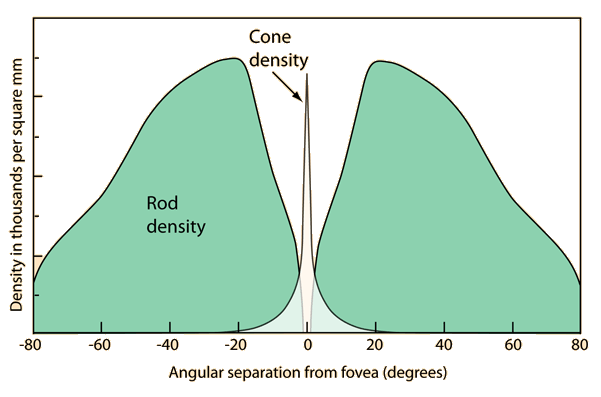Rod and Cone Density on Retina
Cones are concentrated in the fovea centralis. Rods are absent there but dense elsewhere.

Measured density curves for the rods and cones on the retina show an enormous density of cones in the fovea centralis. To them is attributed both color vision and the highest visual acuity. Visual examination of small detail involves focusing light from that detail onto the fovea centralis. On the other hand, the rods are absent from the fovea. At a few degrees away from it their density rises to a high value and spreads over a large area of the retina. These rods are responsible for night vision, our most sensitive motion detection, and our peripheral vision.
| Cone details | Rod details |
Vision concepts
References
Hecht, 2nd Ed.
Sec. 5.7
Williamson & Cummins
| HyperPhysics***** Light and Vision | R Nave |